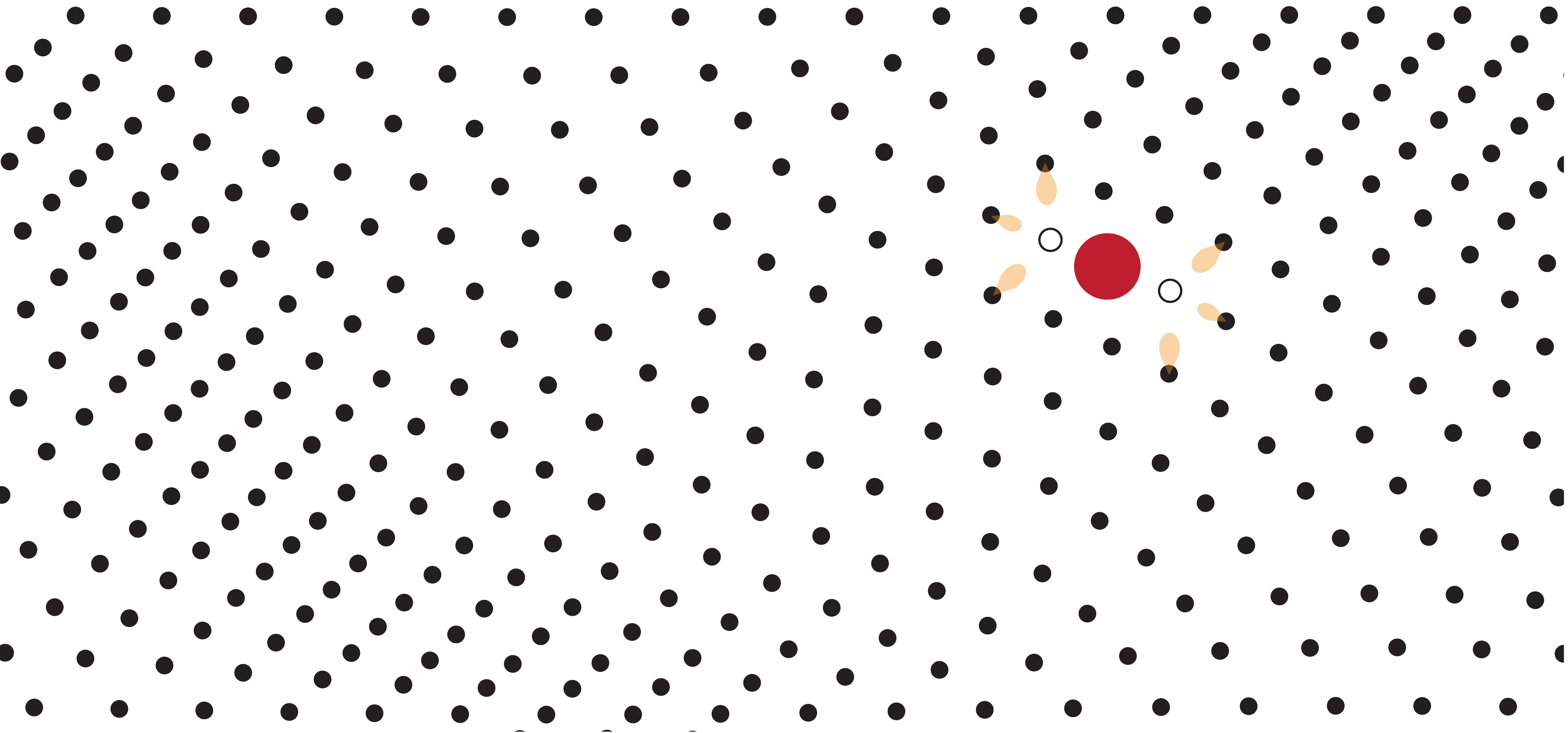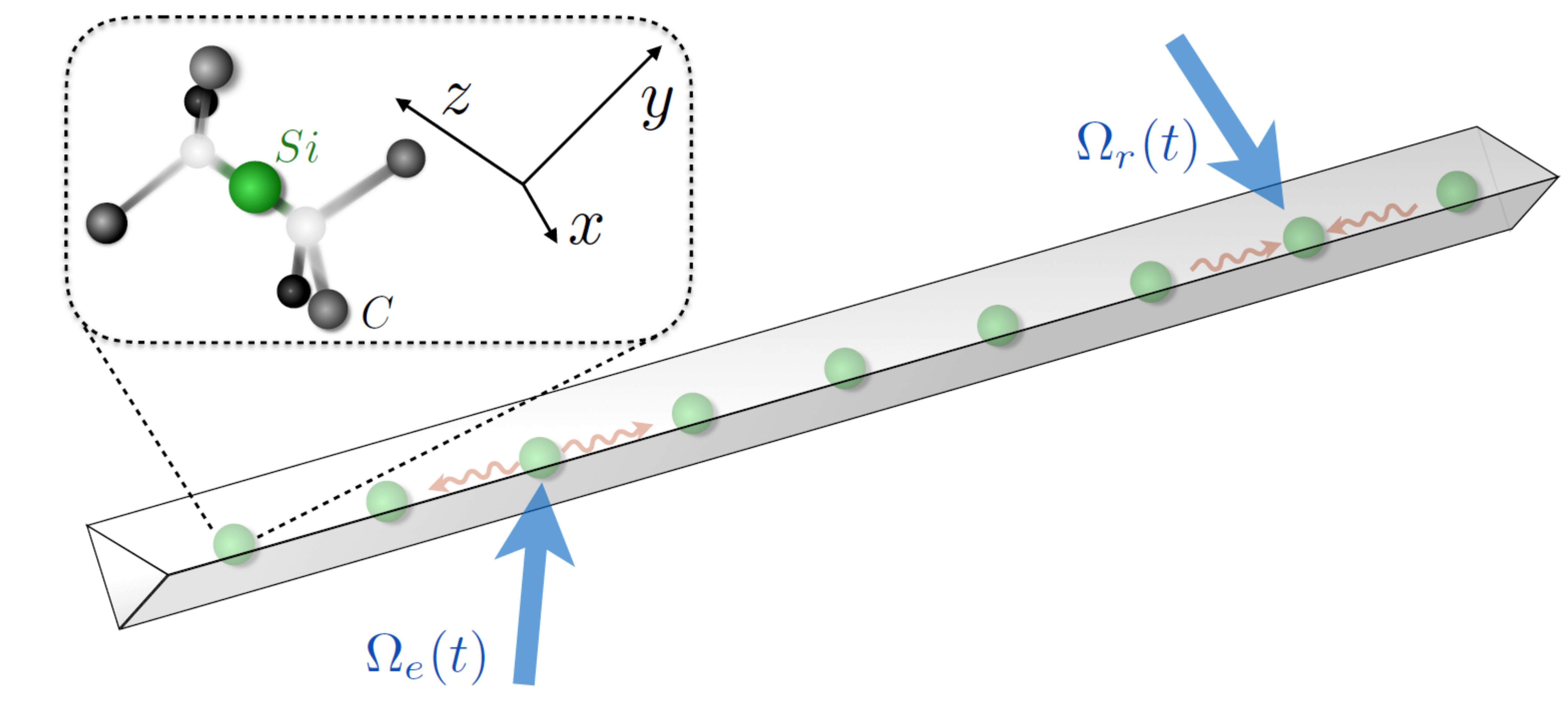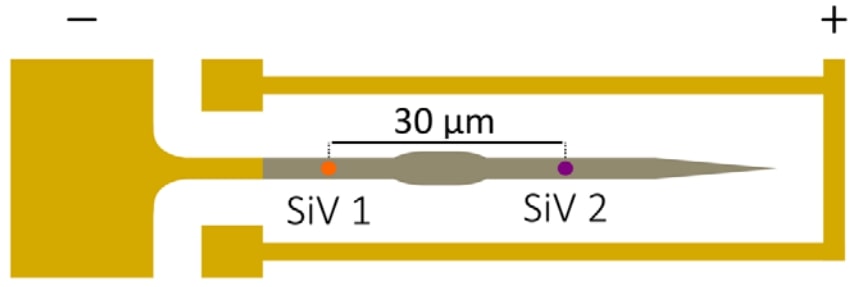Research
I am interested in developing solid state devices with coherent interactions between various quantum degrees of freedom. This includes photons, phonons, spins and other excitations residing in various platforms such as nanoscale resonators, color centers and superconducting circuits. The overarching goal of this type of work is to generate entanglement between disparate quantum systems and explore new architectures for quantum computing, communication and sensing. In parallel, this allows for studies of nanoscale devices and materials in new regimes.
During my postdoc, I have been exploring this theme by building a microwave-to-optical quantum transducer using acoustic phonons as an intermediary. Recently, we used such a transducer to demonstrate quantum correlations between photons in a superconducting electrical circuit and an optical link [link to preprint].
Below is a brief summary of my PhD research at Harvard, highlighting representative papers.
Color centers are defects in solids on the scale of a single atom, featuring optically accessible spin states. We developed photonic and acoustic devices with color centers as building blocks for quantum networks. For what quantum networks are, and why they may be useful, check out this recent review and this popular article.
Quantum acoustics
Efforts towards hybrid platforms for quantum information science suggest the use of phonons as transducers between disparate quantum systems. We identified the silicon vacancy (SiV) in diamond as a color center that provides large, controllable interactions of a spin with phonons.
Controlling the coherence of a diamond spin qubit through its strain environment
Y-I Sohn*, S Meesala*, B Pingault* et al, Nature Communications 9, 2012 (2018)
Featured among 50 most read physics articles of 2018 in the journal

We measured a strain susceptibility of 1 PHz in the SiV ground state, five orders of magnitude larger than that of well-studied systems such as the nitrogen vacancy in diamond. Using this property, we controlled the interaction of a single spin with a fixed temperature phonon bath for the first time.
Phonon networks with SiV centers in diamond waveguides
M-A Lemonde, S Meesala et al, Phys. Rev. Lett. 120, 213603 (2018); editor’s suggestion

Based on our experimental findings, we showed that controlled hybridization of spin and orbital degrees of freedom in the SiV allows for a long-lived spin with MHz coupling rates to phonons confined in nanoscale devices. In analogy with trapped ion quantum processors, we proposed a solid-state platform in which high fidelity gates between spins are mediated by phonons.
Quantum photonics
Nanoscale devices such as photonic crystals provide large atom-photon interaction strengths. But when fabricated around color centers, they degrade optical coherence and increase frequency disorder, making multi-qubit entanglement infeasible. We addressed this challenge by adopting the SiV center and introducing strain as a control field.
Strain engineering of the silicon vacancy center in diamond
S Meesala*, Y-I Sohn* et al, Phys. Rev. B 97, 205444 (2018); editor’s suggestion

Inversion symmetry in the SiV eliminates first order sensitivity to electric field noise, the dominant source of optical dephasing. A deflectable cantilever fabricated around the SiV allowed tuning of optical transitions by hundreds of GHz, ten times the typical frequency disorder. This was the first demonstration of widely tunable, spectrally stable color centers in nanoscale devices.
Quantum interference of electromechanically stabilized emitters in nanophotonic devices
B Machielse*, S Bogdanovic*, S Meesala* et al, Phys. Rev. X 9, 031022 (2019)
See focus story in Physics magazine

The strain control system developed above was used to stabilize two color centers into optical resonance in a nanophotonic waveguide. We observed the signature of an entangled, superradiant state formed by measurement of indistinguishable photons emitted into the waveguide. This verified the suitability of strain control for photon-mediated two-qubit entanglement.